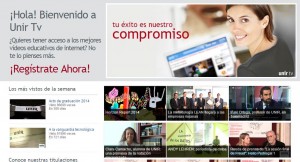What MOOCs cannot do yet: eight challenges before they can be effectively used

MOOCs face a number of challenges. 8, to be precise, before they can be effectively used: accreditation, credit recognition, monetization, content quality, methodology quality, evaluation, integration of informal and formal learning, integration of Open Educational Resources into the official curriculum. Furthermore, we need to clarify what a MOOC is for; why MOOCs are taking over the long-tradition role of Open Educational Resources (OERs, which mean way further than just MOOCs); how to integrate MOOCs into the educational methodology and learning strategy in face-to-face, blended and online learning settings; how to merge formal and informal learning into a combined, successful support to learners, teachers and tutors.
Paris, June 2nd, 2015. In addition, MOOCs require a clear, cross-mission, which highlights the need for basic and specific competence acquisition, as a complement to the current courses, very much focused on personal interests and the provision of additional information to current subjects. MOOCs might be a lethal tool to fight against the lack of access, equity, quality, and resources on learning, for disadvantaged individuals, regions and countries. To do so, MOOCs must be oriented to the competences and skills achievement that make possible to revert the situation, when needed (Qingdao Declaration of Post-2015 Education).
“Quality content and Methodology combine learner and teacher requirements for an effective process”
Amongst all the challenges aforementioned, we highlight two. Quality content, because of the learner’s demands; and Methodology, because of the teacher’s demands.
About Quality: Since everyone can author and disseminate a MOOC, and there is a lack of regulation, or even normalization, about adopted standards on content, evaluation, accreditation and other issues, quality becomes a luxury. Furthermore, there is no basic agreement about the quality features that content must fulfilled. We guess that every author seeks for the best outcome, however there must be a common understanding about what that “best” means.
This involves every type of learning: text, audio, video, streaming, multimedia; responsive, dynamic, static, live; along with user tracking and user information retrieval techniques, for further analysis and categorization, so that the user’s experience can be personalized and enhanced.
This strategy facilitates a rich and diverse access to open and general public, outside researchers and teachers, and accredited researchers at UNIR Research, the research department at the university.

At UNIR, we developed UNIR TV, which provides videocast resources (i.e. lessons, lectures, insights, presentations, and open classes). UNIR TV is structured in three layers. Layer 1, open to everyone, meaning a 20% of the resources. Layer 2, open to free-registered users, meaning another 20% of resources. Layer 3, open to every single enrolled student at the university, bundling the other 60% of the resources. In doing so, UNIR finds the balance between open and proprietary access, which is a must for a private, non-officially-funded institution. This strategy facilitates a rich and diverse access to open and general public, outside researchers and teachers, and accredited researchers at UNIR Research, the research department at the university.
On the other side, Methodology becomes the foundation to build the others. Indeed, along all these insights, needs and risks, methodology becomes the actual backbone for success. When, and if, a MOOC leans or might lean on the above principles, methodology becomes the key for addressing various learner types, target groups, learning styles, and learning itineraries, as part of a long list of learner inputs. Through methodology, a teacher becomes a learning designer, who takes into a comprehensive rationale every single input and resource, step and result, which is part of a MOOC. And the learner can take over his/her responsibility as main role along the learning process; he can even become learning designer for himself.
If we combine Quality content and a good Methodology, OERs can feed for learning in an effective way, which is also commonly accepted and, de facto, approved amongst the communities and the main stakeholders in this evolving setting.
